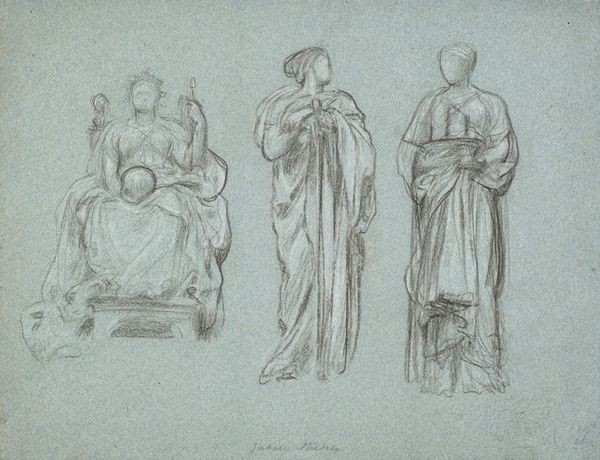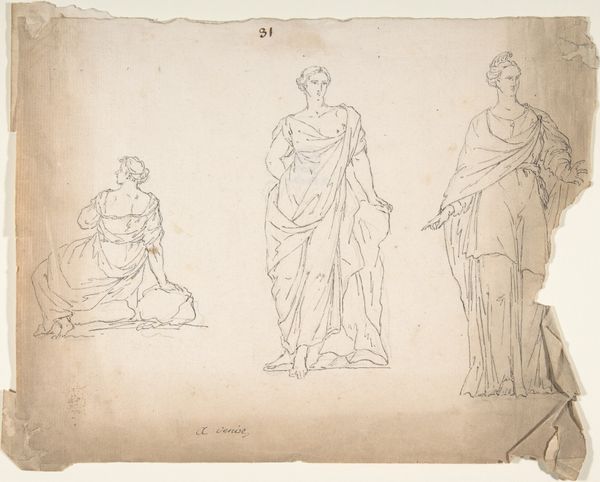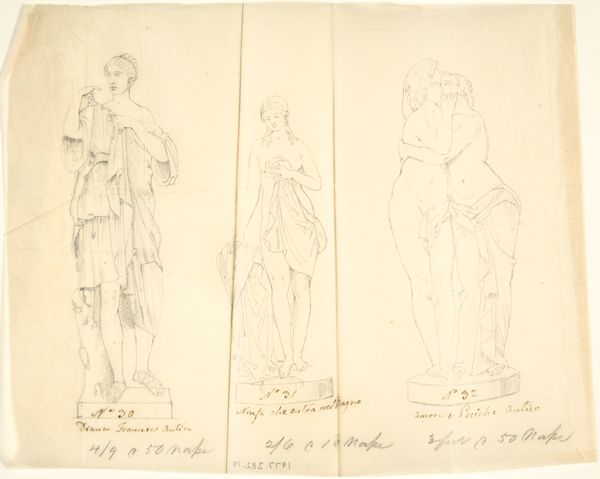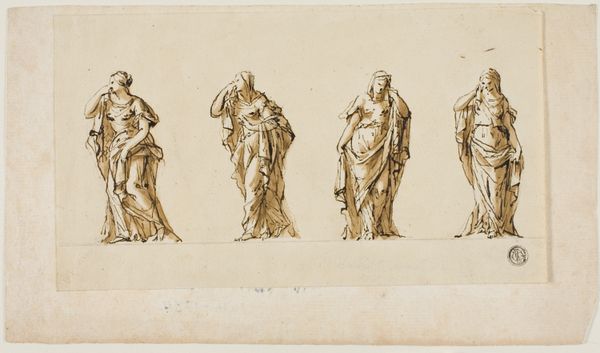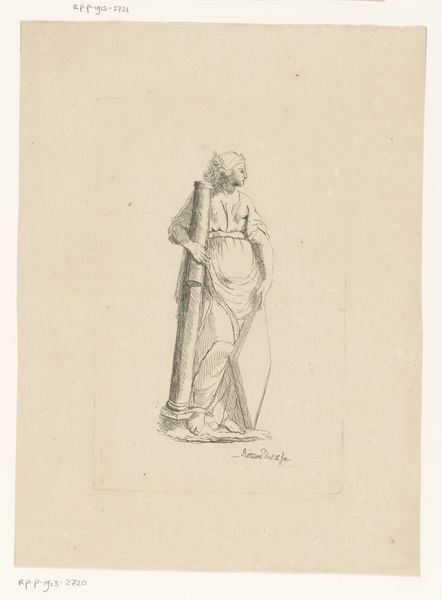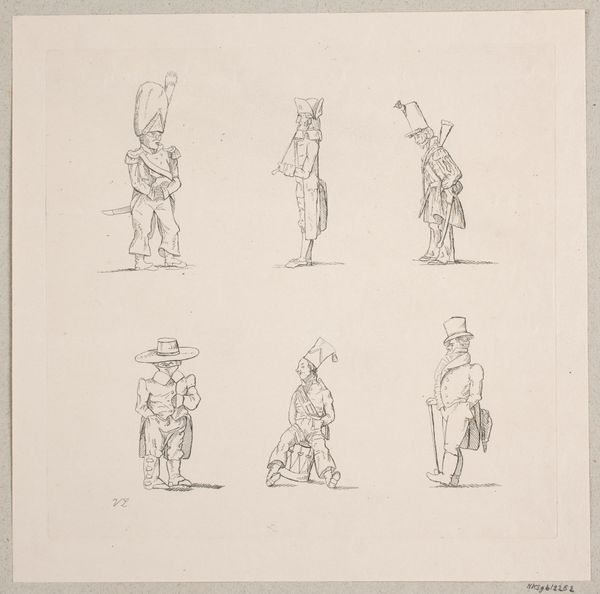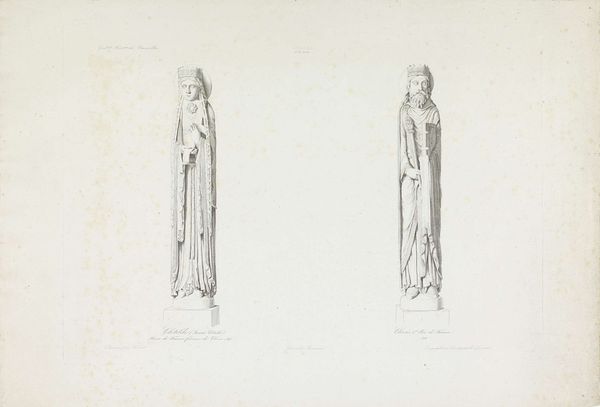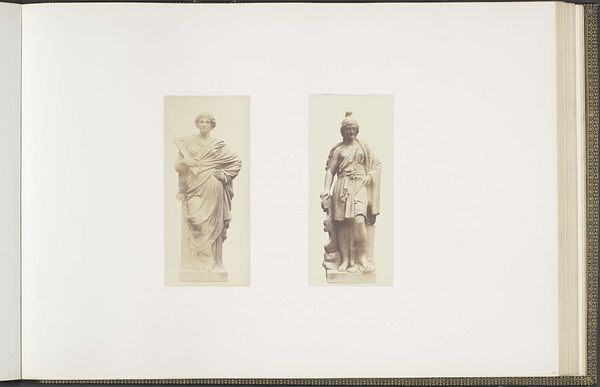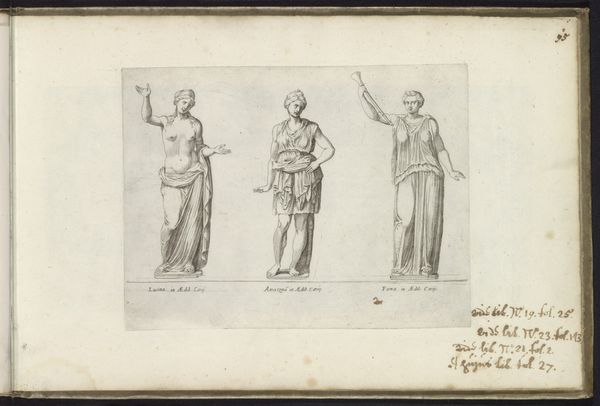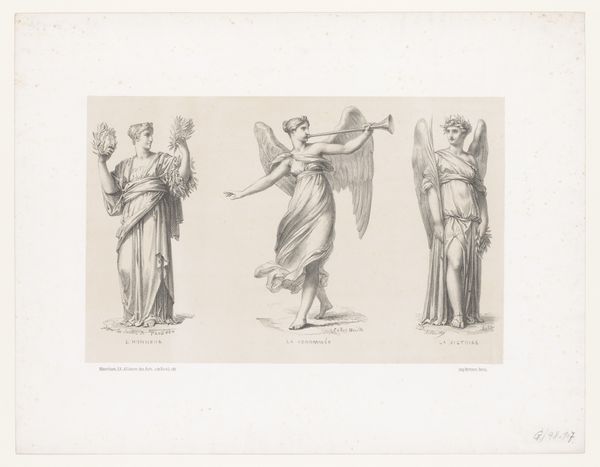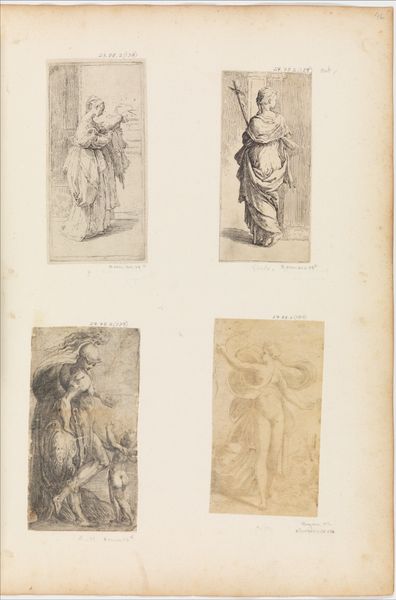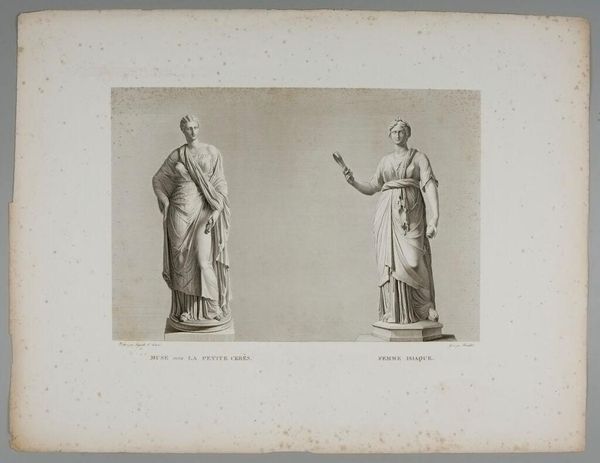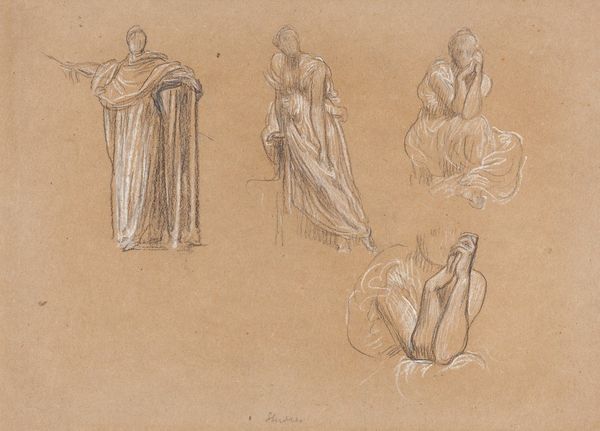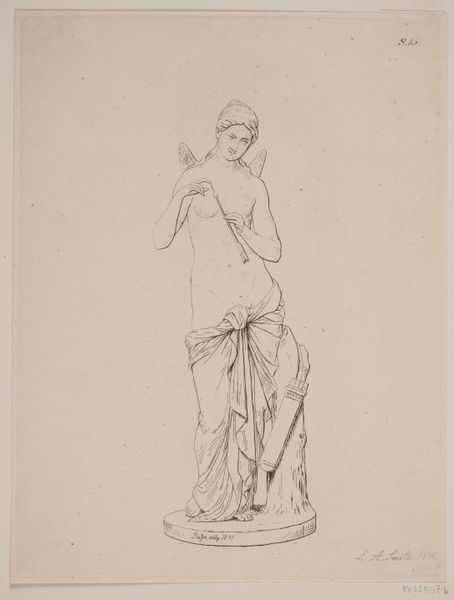
"Faith, Hope and Charity": Stone Figures from Facade of Mission 1936
0:00
0:00
drawing, pencil, graphite
#
portrait
#
drawing
#
classical-realism
#
figuration
#
pencil drawing
#
pencil
#
graphite
#
history-painting
#
academic-art
#
realism
Dimensions: overall: 26.5 x 35.5 cm (10 7/16 x 14 in.) Original IAD Object: Central figure 5'
Copyright: National Gallery of Art: CC0 1.0
Curator: Here we have Edward Jewett's 1936 pencil drawing, "'Faith, Hope and Charity': Stone Figures from Facade of Mission." Editor: My first thought is how restrained the palette is. The limited tonality emphasizes the solidity of these imagined sculptures, making them feel incredibly tactile, almost monumental despite their scale in the drawing. Curator: Precisely. Jewett's academic training is evident in the classical realism on display. Note the strategic use of graphite to simulate the play of light and shadow on stone, lending each figure a three-dimensionality that belies the flatness of the paper. The composition, a triptych of sorts, prompts a formal reading of the virtues themselves. Editor: Absolutely, and within that formal reading we can understand how cultural values were propagated and what architectural elements, like sculpture, can represent. The placement, scale, and rendering all seem significant for the historic importance the statues would have held. Consider the historical context; such themes resonated deeply during the Depression era when faith, hope, and charity were vital to the nation’s psychological resilience. Curator: One can't help but feel a sense of nostalgia as one considers the formal qualities in representing a Classical past; the very essence of academic art to some extent. Note in particular the central figure, a dignified representation of faith, bearing what appears to be a vessel. It grounds the work visually and thematically, serving as the keystone in Jewett's arrangement. Editor: These sculptures originally came from the facade of a mission and they would have visually expressed a system of shared beliefs, wouldn't they? Jewett highlights not only individual virtue but also emphasizes how art acts as a visual rhetoric within communities. I wonder about the intended public for these figures at that time, too; it suggests the power that lies within such pieces that they could reach all different classes and demographics who passed through the space the mission existed within. Curator: It brings to light how artworks like this may initially function on a structural level through representational methods. And, then how it becomes culturally significant for both the society within the depicted scene, and to those whom later receive such a depiction. Jewett compels us to reconsider those forms, their intrinsic characteristics, and cultural values, Editor: Very true. Jewett's work illuminates that fascinating intersection where art meets the socio-historical landscape.
Comments
No comments
Be the first to comment and join the conversation on the ultimate creative platform.
